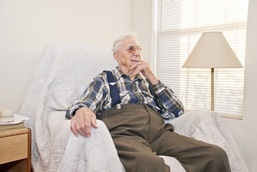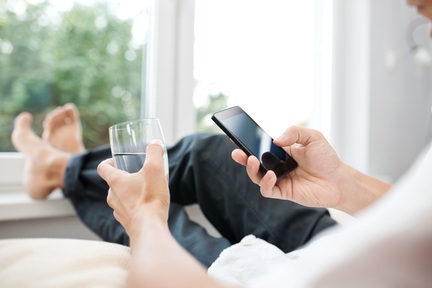Smart Home Technology poised to revolutionise assisted living
An ‘explosion of multi-connected devices’ is set to change the way we live, according to global technology developers Honeywell, which believes that current fast-paced developments will quickly give us the potential to live more efficiently and flexibly than ever before.
Additionally, market research carried out by Honeywell suggests that almost half of UK home owners would consider incorporating smart home technology in the future. With new and innovative products being launched all around the marketplace, the transformation of daily life for adults with care or assisted living requirements is likely to be significant.

Modern households
Marketing communications manager Andy Mansfield claims that the "the demand for smart technology and gadgets in the home is on the rise. More and more everyday devices are now connected to the internet as the desire for greater levels of personal control grows alongside improvements in remote-controlled technology. And heating controls are starting to become a part of this change in the way people control their lives.
"Over the last ten years, the complexity and capabilities of what are often perceived as simple domestic controls have been transformed. No longer are heating controls a neglected dial on the wall, they are progressively becoming part of people’s lifestyles and aspirational products in their own right.
"Consumers’ demands for more flexibility, convenience and communication in their lives, coupled with the continual rise in domestic energy bills, have meant that homeowners now expect so much more from their heating controls. Homeowners are favouring manufacturers who can provide them with new levels of convenience, efficiency and financial flexibility – three of the most important factors for any modern household."
Care sector
Daniel Knight, technical director of Fibaro Home Intelligence, which specialises in the automation of living environments, explores some of the ways that home owners can already adapt the technology for multiple purpose.

He said: “There is a multitude of uses for technology and, in particular, smart home technology. With 47 per cent of UK homeowners considering investing in smart home technology, it is a fast-growing market with a high demand. Usage can range from creating your perfect morning routine with automated blinds raising by 20 per cent to softly illuminate a room, mimicking a sunrise, to something as simple as a remote controlled dimmable lamp to avoid having to get up from your comfy spot on the couch.”
Fibaro also sees smart technology’s potential to transform assisted living as a crucial development for the care sector, saying: “Perhaps one of the most useful and important ways to harness the power of a connected home, is to enhance assisted living, a market that is estimated to be worth £10.1 billion. Motion sensors that know if a person is in a room, or opens a door in the middle of the night, or can send out alarms to a carer if the stove has been left on or a refrigerator hasn’t been opened for a certain amount of time, indicating something might be wrong.”
Mr Knight added:“Smart home technology can be the ideal solution for individuals with different needs and abilities as the technology can provide an environment that is constantly monitored to ensure a person is safe. It can automate specific tasks a person may be unable to perform, such as switching lights on or off, guard against unauthorised access, or warn users they may have left the oven on, or the front door open.”
Keeping people safe and comfortable within their homes with task automation, motion detectors and light dimming sensors could prove crucial in giving assisted living care providers that competitive edge.
Other notable advances within the Fibaro range include products that maximise energy efficiency, developed hand-in-hand with a non-invasive installation procedure that can overcome any existing cabling architecture and using wireless mesh technology.
Massive potential

Smart home technology properties are already winning design awards in the US, such as the Dietrich Homes house which featured in the 2015 Spring Parade of Homes. Numerous innovative features include: smartphone-operated locks on doors; live security camera feeds that can be accessed remotely; the ability to set lights on a schedule; and the monitoring of temperature changes or sump pump failure.
The more successful smart home products, that have been instrumental in enhancing the reputation and viability of the market over the last five years, are those that avoid cluttering up homes with visible gadgets and make life simpler rather than more frustrating. There are even emerging products that are designed to monitor breathing and heart rate, as well as robots that can assess what chores need doing.
According to Grizzly Analytics, 2015 will be the year that “indoor location technologies will mature into serious solutions”, so now might be a good time for assisted living providers to reflect on their potential and remain alert to the many new devices the industry is preparing to launch.
Latest Features News
 28-Nov-19
2019 Election: Labour pledges £10.8 bn for free personal care while Boris Johnson sidelines social care
28-Nov-19
2019 Election: Labour pledges £10.8 bn for free personal care while Boris Johnson sidelines social care
 18-Oct-19
Podcast: Wendy Mitchell and dementia: 'My biggest fear is not knowing who my daughters are'
18-Oct-19
Podcast: Wendy Mitchell and dementia: 'My biggest fear is not knowing who my daughters are'
 30-Sep-19
World's oldest diver aged 96 says 'never accept the fact you are getting old'
30-Sep-19
World's oldest diver aged 96 says 'never accept the fact you are getting old'
 27-Sep-19
Exclusive: Care minister backs care workers' call for time off to grieve and attend funerals
27-Sep-19
Exclusive: Care minister backs care workers' call for time off to grieve and attend funerals
 20-Sep-19
Podcast: Gyles Brandreth urges care workers to learn poetry with elderly
20-Sep-19
Podcast: Gyles Brandreth urges care workers to learn poetry with elderly